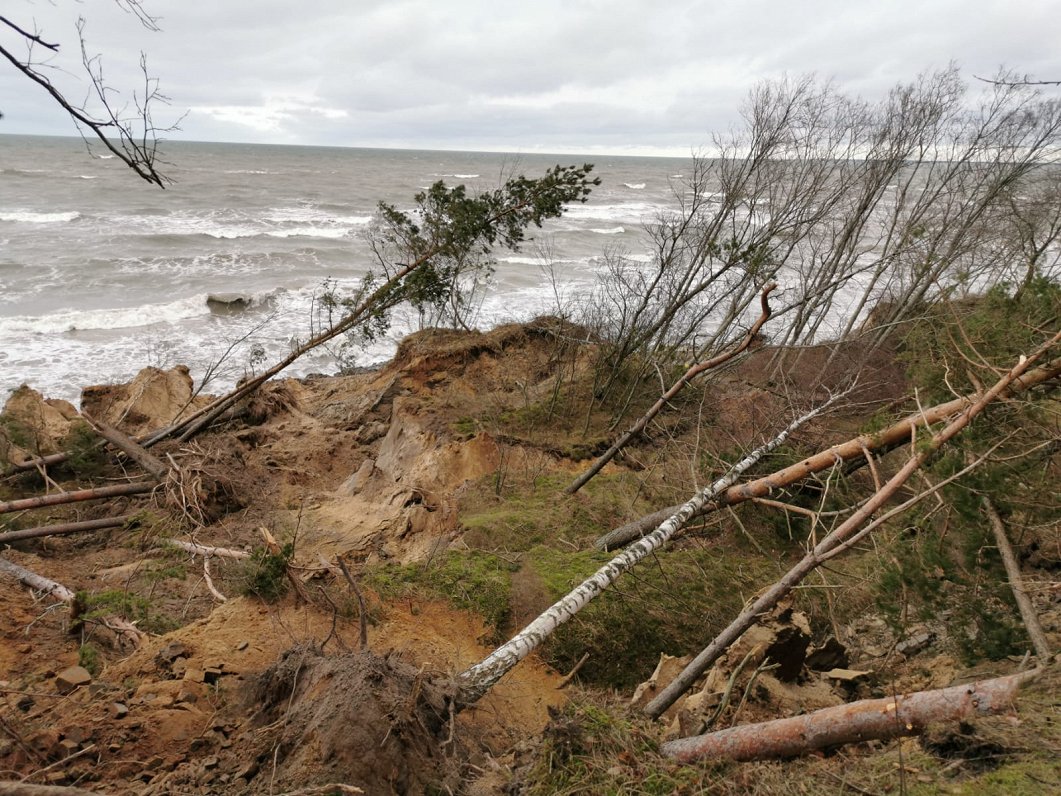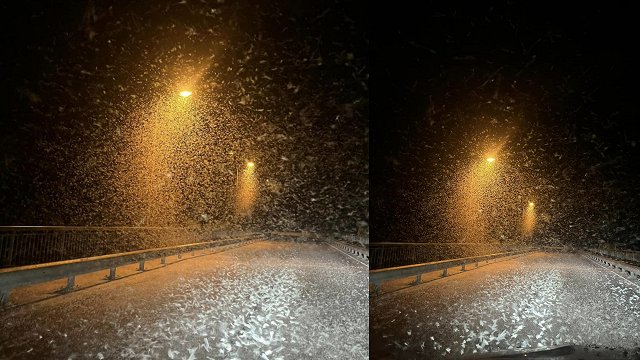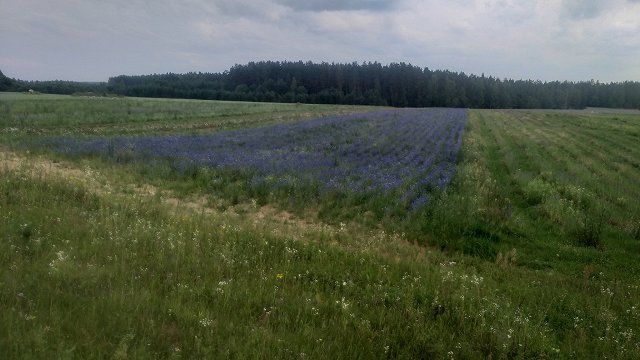Forecasts have been made by analyzing satellite data and predicted sea level change scenarios. Coastal municipalities, where important infrastructure objects will be threatened, must look for solutions, which are often challenging and expensive, stated the Union of Municipalities.
The coastline of Latvia is more than 500 kilometers long, but since 2009, national coastal erosion monitoring has not been carried out. LVĢMC has developed a new methodology for remote observation of coastal changes. Satellite data for the period from 2017 to 2022 are used, as well as drone measurements.
The project concluded that there are changes in the entire coastal area. In some places, the coast also moves towards the sea, but mostly coastal erosion takes place.
Viesturs Zandersons, the center's data analyst, highlighted certain examples of more intense erosion:
"We can see that there are distinct hot spots in several places, such as near Bernati, where there is pronounced coastal erosion. The further section from Liepāja to Akmenrags. There we see a fairly thorough washout in the northern part of Liepāja, which is the Karosta area and also where there are wastewater treatment systems in Liepāja.
One of the most obvious sections, where erosion dominates, is the section of coast from Pāvilosta to Ventspils. On the other hand, on the coast of the Gulf of Riga, accumulation processes are more dominant and erosion only appears in a few places, explained Zandersons.
More threatening storms are forecast
Coastal changes are influenced by factors such as coastal sediments, sea level changes, winds and human impacts. Future changes to the coast have also been modeled based on predicted sea level changes. By the year 2100, the sea could take over 25-35 meters of the Latvian coast, which will cause various effects, said Zandersons:
"Between 1961 and 2020, the average sea level has risen by about 1.5 centimeters, but in the future (until the end of the 21st century) we can expect it to rise by another 11 to 17 centimeters. This means that under we won't be under water, but it should be taken into account that as the average sea level rises, there will also be a greater threat from coastal storms, in which the highest waves will be able to wash more away.
"We will be able to observe some major changes on the coast as well, and of course, if the infrastructure is closer to the water, as it is in some places in Latvia, then this is a kind of warning to the managers of these places as well."
Solutions – plantations, shore nourishment, barriers
Associate Professor of the Faculty of Geography and Earth Sciences of the University of Latvia, Doctor of Geological Sciences, Jānis Lapinskis pointed out that loose and easily washed sediments are mostly found on the coastal slope in Latvia, and the coastal relief can change very rapidly. Therefore, municipalities should take various measures to classify the degree of erosion and in each place endangered objects should be identified and suitable measures taken.
"Non-intervention has for some time been considered by default as the best and most desirable approach in all situations where no important infrastructure objects are at risk. On the other hand, a minimally invasive approach is, first of all, the establishment of all kinds of plantations to promote the accumulation and naturalization of the banks.
"Among these measures we can also add shore nourishment, with which we have relatively little experience in Latvia, but I have no doubt that in the future it will become a routine in many places where there are coastal erosion problems.
"Then there is the traditional approach that we install some kind of barrier/structure between ourselves and the sea, which is of course highly effective directly, but unfortunately also has various negative effects. Probably in those high-risk erosion areas, where something is important, this approach will have to be applied, as in the Liepāja wastewater treatment facilities."
Problem is urgent, but solutions are expensive
In order to mitigate the risks of coastal erosion, municipalities also have access to money from European Union funds worth 35 million euros, which is intended not only for coastal erosion, but also for flood prevention measures. However, Sandra Bērziņa, environmental protection advisor of the Union of Latvian Municipalities, confirmed that saving the coast is becoming an increasingly urgent problem for coastal municipalities and the solutions are expensive:
"There are solutions, but we have to take into account that very often, if we strengthen one place, this erosion is more acute in another place. Therefore, it is very important to understand in which places it makes sense to make these bank fortifications and which places we leave to nature.
"It's all about planning. As for funding, there are no such secure financial sources for it yet. We hope that during this planning period, local governments could apply for European Union funding, where the Cabinet of Ministers regulations on this are already in the process of being developed, but these measures are extremely expensive. Secondly, the processes of erosion definitely also threaten known historical properties of the residents, and then we have to think about whether any compensation mechanisms are needed, which we have not really resolved at the moment."
In the near future, members of the public will be able to look at the coastline monitoring information themselves at LVĢMC's portal klimats.meteo.lv, and satellite data of coastal changes will be updated on an annual basis.




























